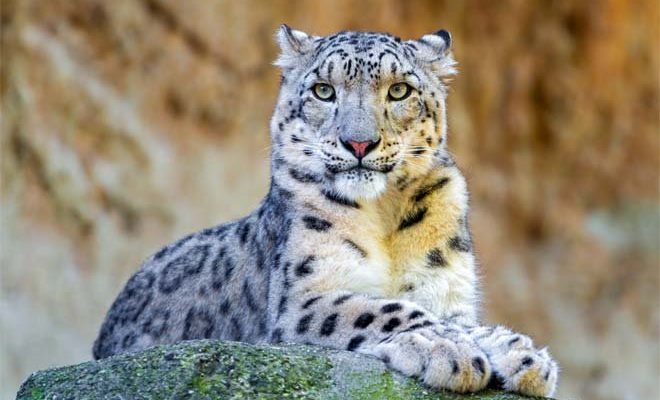![Comparing The Snow Leopard Vs. [Similar Species]](https://gudri.com/wp-content/uploads/2025/06/Comparing_The_Snow_Leopard_Vs___Similar_Species__image_0.jpg)
You might be wondering what makes these two leopards stand out. While they share some similarities, like their beautiful coats and impressive agility, there are also key differences that set them apart. Whether you’re an animal lover or just curious, understanding these magnificent cats helps us appreciate the diversity of wildlife on our planet. Let’s explore the fascinating features and lifestyles of the snow leopard and the clouded leopard.
Physical Characteristics
Both the snow leopard and clouded leopard are stunning, but their physical traits are tailored to their environments.
The snow leopard is quite robust, with a thick body and long tail. Its fur is pale gray with black rosettes, which provides excellent camouflage against the rocky mountainous terrain. This adaptability is crucial for stalking prey like ibex and blue sheep in the harsh climates of Central Asia. Snow leopards have short limbs, which help them navigate rocky landscapes efficiently. Their large paws act like natural snowshoes, distributing their weight and preventing them from sinking into the snow.
On the other hand, the clouded leopard has a more agile build, with a long, flexible body and a notably long tail. This helps it balance while climbing trees in its forest habitat. The clouded leopard’s coat features large, cloud-like spots that aid in blending into the dappled sunlight of the jungle. This distinctive coloring allows it to be an excellent ambush predator, stealthily moving through the trees to catch smaller animals like monkeys and birds.
Habitat and Range
The habitats of these two leopards reflect their unique lifestyles and adaptations.
Snow leopards roam the high mountain ranges of Central and South Asia. Their home spans countries like Nepal, Bhutan, India, and Mongolia. They thrive at elevations between 9,800 and 14,800 feet, where the air is thin and the temperatures can plummet. This harsh environment requires them to have specialized adaptations for cold weather, including their thick fur and ability to find shelter in rocky outcrops.
In contrast, clouded leopards are found in the warm, humid forests of Southeast Asia. They range from the Himalayan foothills to the rainforests of Malaysia and Indonesia. Preferring lower elevations, these leopards reside in tropical and subtropical forests, where they have a forested canopy to climb and hunt. The dense foliage is perfect for spotting their favored prey, such as deer and birds.
Behavior and Social Structure
When it comes to behavior, both leopards exhibit solitary habits but have different social structures.
Snow leopards are primarily solitary, using vast territories that can span over 100 square miles. They are mostly active during dawn and dusk, which is known as crepuscular behavior. During the mating season, females signal their presence with a series of vocalizations, and males may travel considerable distances to find them. They communicate using scents, marking their territory with urine and claw marks on trees and rocks.
Clouded leopards, while also solitary, may display a bit more social interaction than snow leopards. They are known to be more vocal, using a range of sounds to communicate, from growls to chirps. Unlike their snow-dwelling cousins, clouded leopards sometimes form loose associations, especially when raising cubs. The mother will care for her kittens in a tree den for several months, teaching them how to climb and hunt.
Diet and Hunting Strategies
Dietary habits also highlight the differences between these two leopards, reflecting their environments and prey availability.
Snow leopards primarily hunt large ungulates, such as ibex, blue sheep, and domestic livestock. Their hunting strategy often involves stalking their prey in rocky terrain, using the landscape to conceal themselves. Once close enough, they make a swift, powerful leap to capture their meal. Their ability to pull down animals three times their weight demonstrates their incredible strength and agility.
Clouded leopards, on the other hand, are more versatile in their diet. They prey on smaller mammals, including deer, monkeys, birds, and even squirrels. Using their climbing skills, they often hunt from trees, ambushing their prey below. Their long, sharp teeth allow them to grip and hold onto their catch, making them effective predators in the canopy.
Conservation Status
Sadly, both the snow leopard and clouded leopard face threats that have led to significant declines in their populations.
The snow leopard is classified as vulnerable by the International Union for Conservation of Nature (IUCN). Factors such as habitat loss, poaching for their beautiful pelts, and retaliatory killings by herders pose significant risks. Conservation efforts are underway, focusing on protecting their habitats and promoting coexistence with local communities.
Clouded leopards are also classified as vulnerable, facing similar threats. Deforestation for agriculture and logging, along with illegal poaching, endanger their survival. Conservation organizations are working to secure forests and raise awareness about the importance of these unique felines.
Interesting Facts
Both leopards have unique qualities that make them fascinating to study.
– Snow leopards can leap up to 50 feet in a single bound, a skill that helps them navigate their steep, rocky habitats.
– They have large nasal passages that warm the cold air they inhale, making it easier for them to breathe at high altitudes.
– Clouded leopards have the ability to rotate their ankles, allowing them to climb down trees headfirst, a skill that’s quite rare among big cats.
– Their large, rounded pupils help them see well in low light, giving them an advantage during dusk and dawn hunting trips.
In summary, while the snow leopard and clouded leopard share some similarities, their differences are striking. Each species has adapted beautifully to its unique environment and has developed hunting strategies that suit their lifestyle. Unfortunately, both are facing threats due to human activity, highlighting the need for conservation efforts. By learning about these incredible creatures, we can help raise awareness and support for their protection. Appreciating the snow leopard and the clouded leopard isn’t just about admiring their beauty; it’s about understanding the delicate balance of ecosystems and the role these felines play within them.

